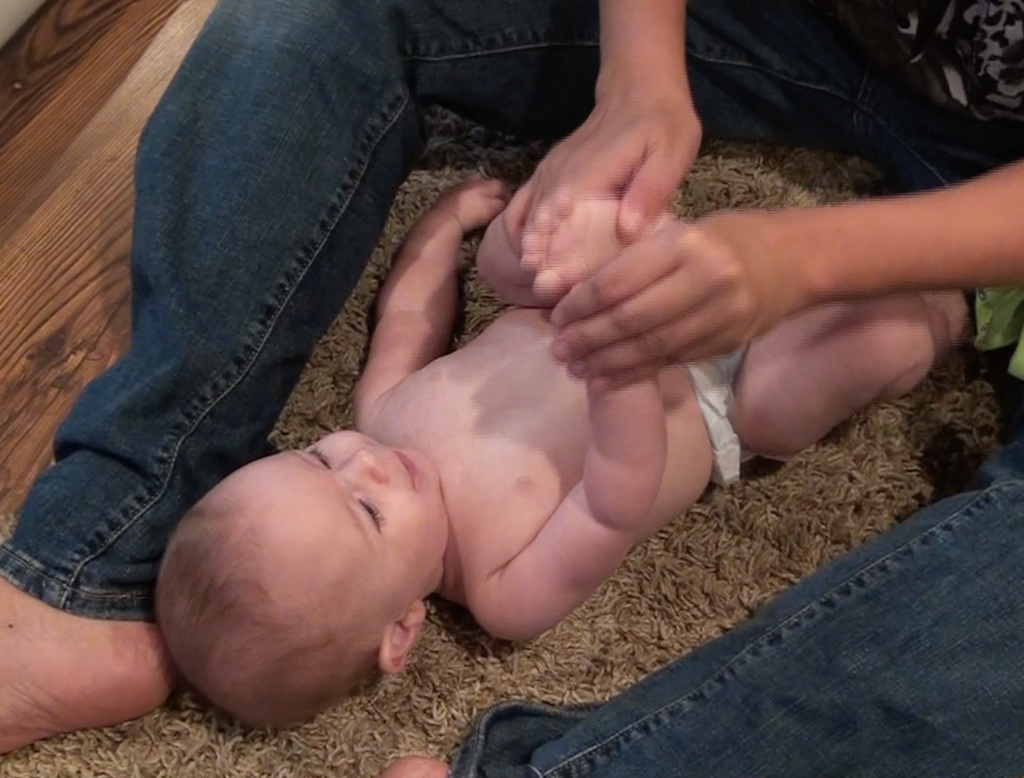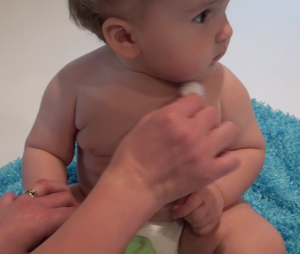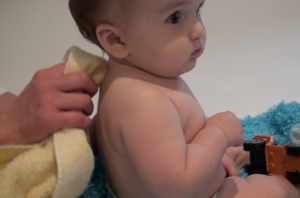
The first communication your baby receives is through the skin. We as humans are naturally inclined to want to hold babies, snuggle babies, tickle babies, and play with their tiny fingers and toes. How opportune that is for newborns because their sense of touch is one of the most advanced senses at birth, and just by touching their skin we are helping their brain to develop. Our skin is our largest organ with hundreds of thousands of nerve endings sending information to our brains, so a large portion of the brain is stimulated by the sense of touch. We have learned over the years that touch is not only important for bonding and developing the baby’s sensitivity and motor skills, but it is vital for their overall health and emotional well-being.
Touch is the very first of all the senses to emerge in utero. The one-inch, six-week-old embryo can already sense touch to the mouth and nose. Interestingly enough however, the sense of touch is nowhere near fully developed at birth. Most children’s skin sensitivity and ability to discriminate different temperature, movement, and pressure is not as acute as that of an adult until age six or seven. That is just one of the reasons why it is so important that we cuddle our babies and help them “learn” the sense of touch.
Just as babies need to learn to see, to discriminate different sounds, and to use their muscles to crawl and walk, they also need to learn the sense of touch. Babies need to learn to “feel” hot verses cold. One-week-old babies will turn their cheek away from a cold wash cloth and toward a warm wash cloth, and pull their hand away from a hot wash cloth, but babies cannot regulate their own temperatures and toddlers who were not exposed to different temperatures as babies are more likely to suffer burns. Babies also need to learn to process touch, pressure, movement, and body awareness. When babies are born they have no sense of where their hands and feet are or where their body stops and mommy’s body begins. They learn all this through touch. Baby massage provides that invaluable sense of touch that is so vital to babies’ well being.
Your baby is learning a lot about the world by what he feels against his skin. The sensation of your skin against his, his clothes, the water from the bath, and the towel that you dry him with. Sometimes babies develop “tactile sensitivities” and are bothered by their clothes, textures, and even certain foods in their mouth. Ensuring that your baby has a lot of opportunity to process different sensations and feelings against his skin will help prevent any tactile sensitivities later on.
Think about putting different textures on his body while saying the name of his body parts. This will help his language development as well as linking two senses together.


In addition to textures, you can also expose your baby to different temperatures and movements. Rub a feather, coarse washcloth or cotton ball over different parts of his body as you say “this is your foot, this is your nose, this is your tummy.” Put your baby down in the grass or sand, so they experience those different textures with larger parts of their body. Gently put his hand in warm water and cold water as you say “warm” and “cold” to teach him to process different temperatures. Wrist and bootie rattles are great for teaching babies body awareness, and swaddling in a blanket gives them the all over pressure to stimulate those brain cells. As children get older, they can still get massages, hugs, and snuggles on a daily basis.
Isn’t it great to know that something we already do several hours a day is so instrumental in helping our babies develop?

